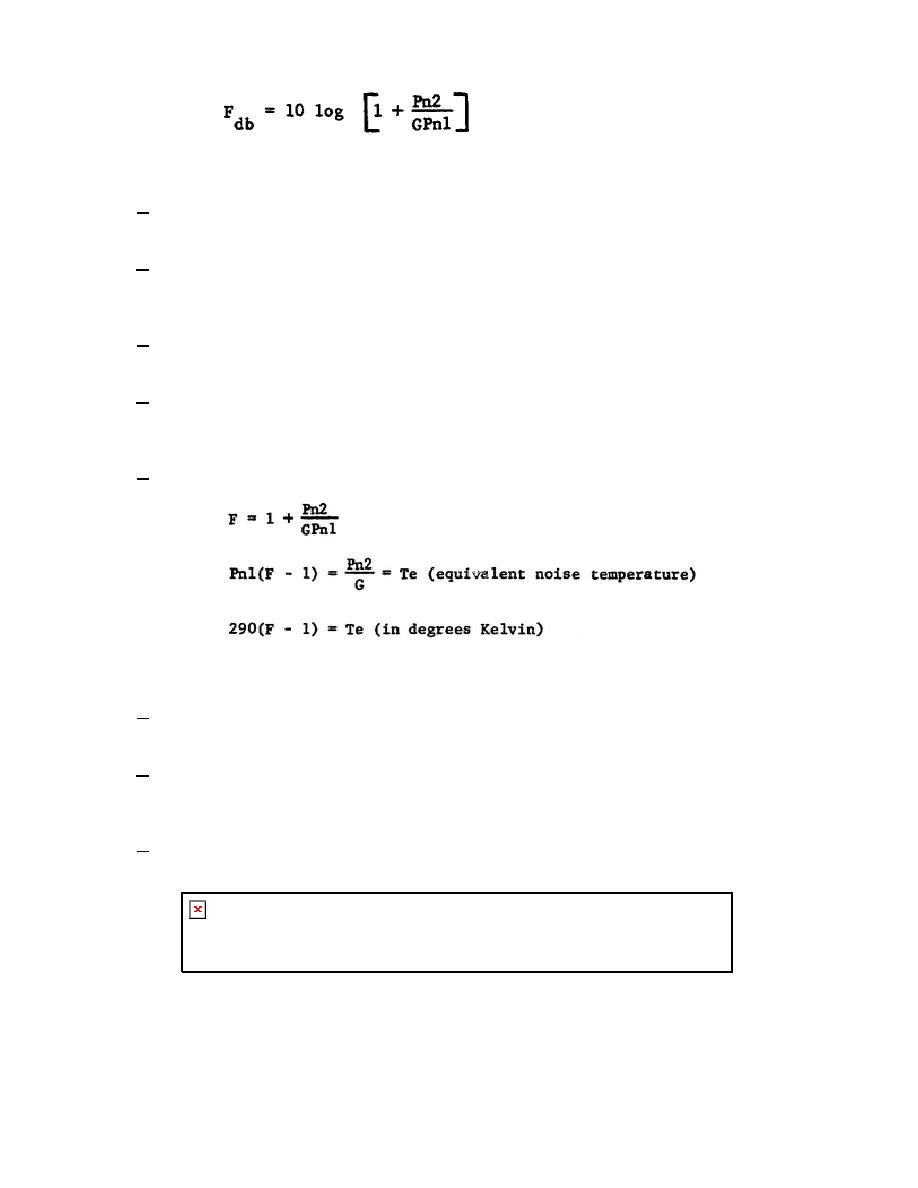
4-10.
EQUIVALENT NOISE TEMPERATURE
a. Sensitivity is one of the most important receiver parameters. It is defined as the minimum input
signal required to produce a specified output signal having a specified signal-to-noise ratio.
b. The signal-to-noise ratio of a receiver is determined by the amount of receiver gain and the noise
contribution. Generally this ratio is expressed as S/N. We are most concerned with the noise contribution of a
receiver, and therefore we use the expression Pn2/G.
c. The expression Pn2/G indicates the relative noise contribution and gain of an amplifier. This
expression is the equivalent noise temperature of the receiver (Te).
d. The first step in arriving at Te is to determine the noise figure. The noise figure of a receiver is
obtained by measuring the noise power. Once the noise figure has been obtained, conversion to equivalent noise
temperature may be performed.
e. The equivalent noise temperature is obtained by rearranging the noise figure expression.
4-11.
FACTOR METHOD OF DETERMINING NOISE CONTRIBUTION
a. A simplified method of determining the relative noise contribution of a receiver is in current use.
This method is known as the Y factor method. This method does not use complex devices or calculations.
b. The Y factor method provides a means of determining the relative noisiness of a receiver on a day-to-
day basis. The Y factor of a receiver cannot be compared with the Y factor of another type of receiver without
introducing constants and subsequent calculations.
c. The Y factor of a receiver is defined as the receiver's noise power output with a matched source
(290K) input divided by the noise power output without the noise source supplied.
344 L4
145



 Previous Page
Previous Page
